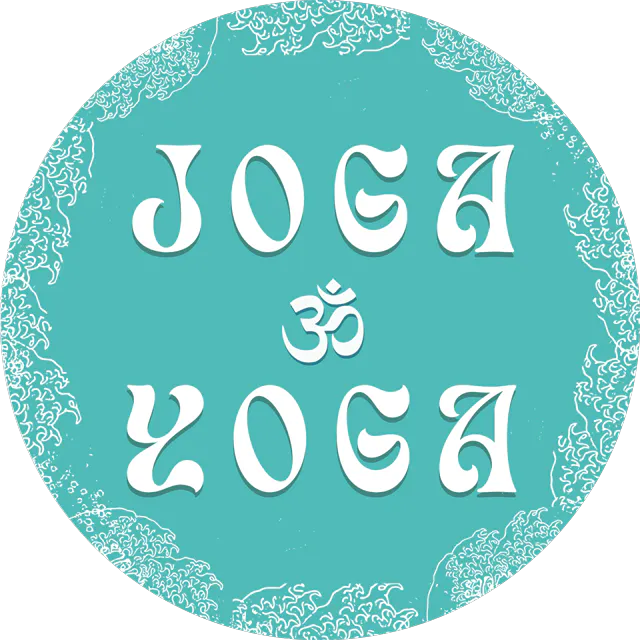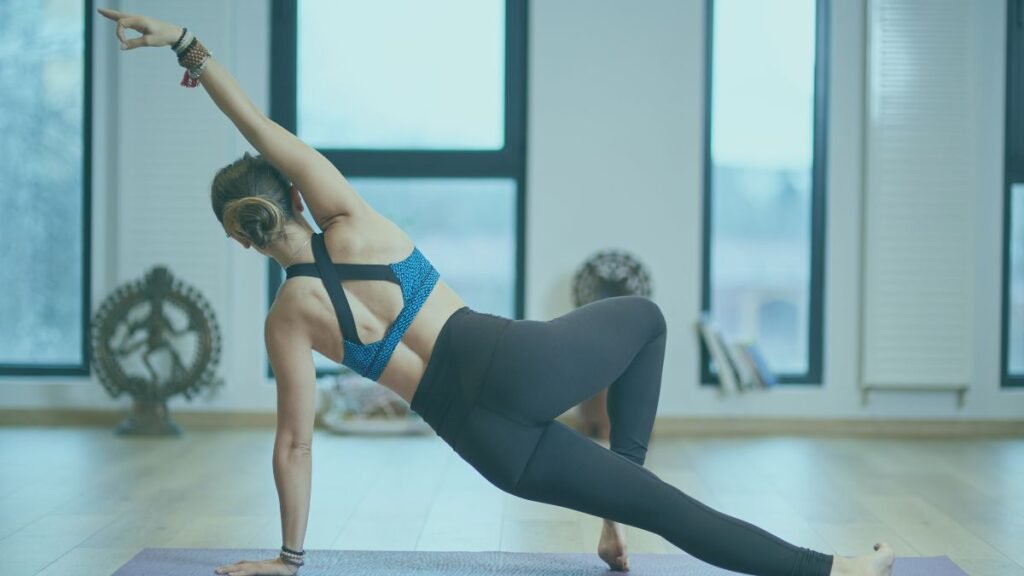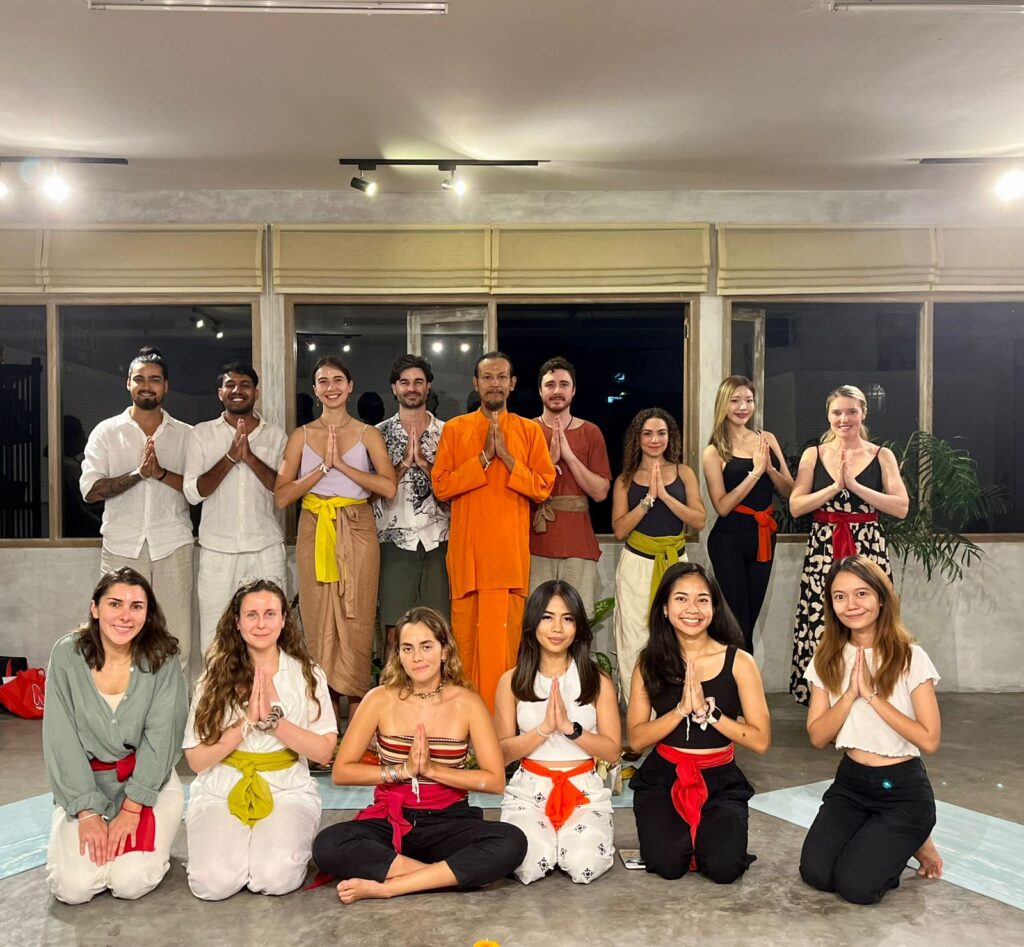Introduction: The Heat Hits Differently
You step into the room and it’s already hot. Not just warm, thick, steamy, sauna-like heat that hits you as soon as you roll out your mat. A few minutes into class, your heart is racing, your shirt is soaked, and your mind starts wondering, Is this really just yoga? By the time savasana comes, you feel like you’ve just climbed a mountain—physically drained, mentally quiet, and emotionally stirred.
Hot yoga isn’t like other styles of yoga. It demands more from your body, more from your breath, and often, more from your emotions. Some people love the intensity and the detox-like feeling. Others feel totally wiped out, even overwhelmed.
So what’s really going on? Why does hot yoga feel so intense, both physically and emotionally? Is it just the heat, or is something deeper happening beneath the surface?
In this article, we’ll break down what hot yoga actually does to your body, why it can feel so extreme, and how to understand the signals your body is sending you. From the science of heat and circulation to the emotional release that sometimes happens during practice, we’ll explore what makes this style of yoga so powerful—and how to approach it in a way that’s balanced and safe.

What Happens to Your Body in Hot Yoga?
When you’re in a heated yoga studio, usually around 95 to 105 degrees Fahrenheit, your body reacts fast. The heat causes your blood vessels to expand, a process called vasodilation. This helps improve circulation, delivering more oxygen to your muscles and brain. At the same time, your heart works harder to cool your body down by sending more blood to the skin, where the sweat can evaporate.
That increase in heart rate, sweat, and blood flow makes even the simplest poses feel more challenging. A standing forward fold that might feel easy in a regular class can feel like a test of endurance in a hot yoga session. And because your muscles are warmer, you may feel more flexible, but you also need to be careful not to overstretch.
All of this means your body is doing more behind the scenes, and it’s part of why hot yoga can burn more calories compared to other styles. If you want a deeper dive into the numbers and how to get the most out of your sessions, check out this breakdown on how heat affects your body and calorie burn during hot yoga.
The intensity isn’t just about physical effort, it’s about how your entire system responds to being pushed in a heated environment. And that leads us to another layer: how hot yoga affects your emotions and energy.
The Emotional Side of Hot Yoga
Hot yoga doesn’t just challenge your body, it can stir up your emotions too. If you’ve ever felt unexpectedly teary or emotionally raw during or after class, you’re not alone. It’s a common experience, and no, it’s not just the heat.
As your body opens up through movement, breath, and sweat, stored emotions can begin to release. We carry tension in our muscles, especially in areas like the hips, chest, and jaw. When you start moving through poses in a heated room, those tight spots soften, and with them, emotions that have been stuck can begin to rise.
The heat plays a role in this as well. When the body is hot, your mental defenses naturally drop. You’re less guarded, more in your body, and more present with how you feel. That vulnerability can make space for emotional clarity, or even emotional release.
This is why some people leave class feeling lighter and calmer, while others feel like something heavy has surfaced. If you’re experiencing stress or emotional tension in your daily life, practices like yoga for stress relief can also support this process in a gentler way.
Hot yoga, in this sense, becomes more than just a workout. It turns into a cleansing experience for both body and mind.

What Your Body’s Telling You (But You May Miss It)
While hot yoga can make you feel energized and refreshed, it can also push your system too far if you’re not paying attention.
One of the first signs is dehydration. When you sweat a lot, your body loses not just water but also important electrolytes. Without enough of these, you might feel dizzy, lightheaded, or overly fatigued after class. Muscle cramps, headaches, and trouble focusing are also signs that your body needs support, not more heat.
It’s also important to understand the difference between feeling challenged and feeling overwhelmed. A challenging practice might leave you tired but satisfied. Feeling overwhelmed, on the other hand, can leave you shaky, disoriented, or emotionally off. That’s your body asking you to slow down, breathe, and maybe take a step back.
If you’ve ever wondered why you may feel totally wiped out after class, this article on why you may feel totally wiped out after class explains how the heat, breathwork, and emotional load can all combine to leave you feeling more drained than expected.
Your nervous system is always giving you feedback. The key is learning to listen and to give yourself permission to rest or modify your practice when needed.
The Role of Your Nervous System
To really understand why hot yoga feels so intense, we need to look at your nervous system and how it responds to heat, movement, and stress.
Your nervous system switches between two main states: the sympathetic state, also known as “fight or flight,” and the parasympathetic state, which is “rest and digest.” In a hot yoga class, your body often goes into that alert, active mode. Your heart beats faster, your breath gets deeper, and your body works hard to cool itself down. This kind of stimulation can be energizing in small doses, but too much of it without balance can leave you feeling wired or burned out.
That’s why it’s so important to bring yourself back into a calm state after practice. Breathwork, stillness, and gentle movement can all help your system shift into a restful mode. The more aware you are of these patterns, the more you’ll be able to use hot yoga as a tool for balance, not just intensity.
If you’re interested in how the breath plays a deeper role in this process, take a look at our guide on mastering pranayama techniques. It breaks down breath control in a way that helps calm your nervous system before and after high-intensity yoga.
Is Hot Yoga Good or Bad for You?
The answer isn’t black and white—hot yoga can be both powerful and overwhelming, depending on how it’s practiced and how your body responds.
On the positive side, hot yoga supports better circulation, increases flexibility, and can bring a sense of mental and emotional release. The warmth can help relax tight muscles and deepen your practice. It can also leave you feeling clear and focused, especially if you’ve been holding on to stress.
But it’s not for everyone. If you’re feeling drained, emotionally heavy, or dehydrated, hot yoga might push you further than you need to go. In those moments, it might be better to rest or try a style that’s more calming and cooling.
A great way to stay in tune with your practice is to notice how your body feels both during and after class. If you’re unsure about your body’s signals or how to adapt your routine, this article on how yoga works offers insight into how different styles affect your physical and mental systems in unique ways.
Listening to your body is always the best guide. The goal is never to push through pain or exhaustion, it’s to move with awareness, balance, and care.

Tips for Recovering After a Hot Yoga Session
After a hot yoga session, your body needs time to replenish, reset, and re-center. The work you do after class is just as important as the practice itself. Recovery helps your nervous system return to balance and prepares your body for your next session.
Start with hydration, but not just water. When you sweat heavily, you also lose electrolytes like sodium, potassium, and magnesium. Replacing these is key to feeling steady again. Coconut water, electrolyte tablets, or even a pinch of sea salt in your water can help bring your system back into balance.
Next, focus on cooling breathwork and stillness. After class, give yourself a few quiet minutes to lie down or sit in meditation. Practices like Sheetali or Nadi Shodhana breathing can cool the body and calm the mind.
Your post-class meal also matters. Go for something nourishing and easy to digest, nothing too heavy or spicy. If you’re looking for ideas, our article on what to eat before hot yoga includes options that also work well after class to help rebuild energy gently.
And finally, don’t be afraid to skip a session if your body’s asking for rest. Hot yoga is a strong practice, and rest days help your body integrate the work and stay in rhythm. Recovery is part of the practice too.
Conclusion: Intensity with Intention
Hot yoga is intense by design. The heat, the breath, the sweat, it’s all meant to push your limits and help you grow. But it’s only powerful when practiced with care and awareness.
When you understand what’s happening inside your body, it’s easier to know when to lean in and when to pull back. The real strength comes from balance, not just effort.
Hot yoga amplifies everything: your thoughts, your breath, your emotions. It helps you hear what your body has been trying to say all along.
So as you move through your practice, ask yourself:
How does it make you feel? Are you listening?
Whether you’re on your first class or your fiftieth, hot yoga can be a path to clarity and strength, if you treat it with the respect it deserves.






